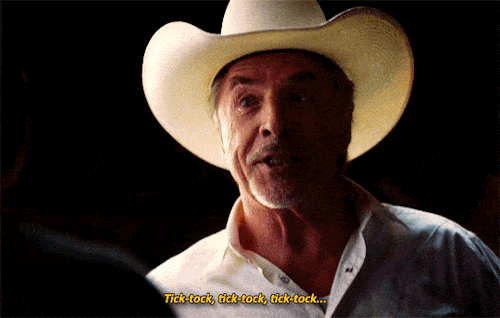🛰New Chapter 11 Bankruptcy Filing - OneWeb Global Limited🛰
OneWeb Global Limited
March 27, 2020
We have been complaining for months about how bankruptcy was getting boring. There are only so many retail, oil and gas, biopharma or mass tort cases to write about before things start to get really … and we mean REALLY … monotonous. And so a shout out to Softbank’s Masa Son: as always, you’ve supplied some much needed novelty to the mix! Amidst countless stories of one Softbank portfolio company after another getting a new directive, fresh discipline or retraded on deals (cough, WeWork), portfolio company OneWeb Global Limited and eighteen affiliates (the “debtors”) filed for bankruptcy.
As far as Softbank investments go, the debtors are SOOOOOOOO on brand. It is almost literally a “moonshot,” an uber-ambitious project aiming to deploy “the world’s first global satellite communications network to deliver high-throughput, high-speed, low-latency Internet connectivity services, having an ability of channeling 50 megabits per second, with a latency of less than 50 millisecond, and capable of connecting everywhere, to everyone.” Since 2012, the debtors have been developing a low-Earth orbit satellite constellation system and associated ground infrastructure “capable of delivering communication services for use by consumers, businesses, governmental entities, and institutions, including schools, hospitals, and other end-users whether on the ground, in the air, or at sea.” This means they have started mass producing small satellites, acquiring various authorizations and spectrum icenses (i.e., the use of Ku-band and Ka-band radio-frequency spectrum on a global basis) and domestic market access/services authorizations; they have also completed three launches of 70 satellites in the last year. “OneWeb was well on its way to growing its constellation to 648 satellites with the goal of beginning customer service demonstrations in late 2020 and providing full global commercial coverage by late 2021 or early 2022.” Right. Just like Uber Inc. ($UBER) is delivering autonomous cars and WeWork is sustainably spreading its community-first mission across the world. You have to hand it to Masa Son: the man has some vision. Some entrepreneurial spirit. Eventually, though, there has to be money to support the ambition.
Right. So, about the money. The debtors have raised a lot of it — no surprise considering the capital intensive nature of the business. The raises include:
A $500mm equity raise backed by Airbus Group Inc. Hughes Network Systems LLC, Intelsat Corporation, Qualcomm Incorporated and Virgin Group Ltd.
A $1.2b equity raise, $1b of which came from Softbank Group Corp. and the other $200mm from existing investors.
A $408mm note issuance to Softbank as administrative and collateral agent.
A $1.56b senior note issuance (and corresponding warrant issue) secured by substantially all of the debtors’ assets including share pledges and rights to radiofrequency authorizations. This issuance rolled-up the $408mm note.
In total, the debtors has over $1.73b in funded debt outstanding as of the petition date on top of the $1.7b of equity raised.
And yet it is in bankruptcy first and foremost because of liquidity issues. As a development stage company, it is what the venture capitalists would call “pre-revenue.” Worse than that, development is time-consuming and expensive and the build out of the debtors’ systems “exhausted [their] existing equity and debt financing.” Again, this is Softbank: massive cash burn is part of its playbook. We’ve all seen this movie before. There’s always tons of money until — poof! — suddenly there’s not. Since 2019, the debtors have been seeking investments from existing and new investors but nobody would bite. It seems that investors hesitated to throw good money after bad; it is also safe to presume that, by this point, a certain level of post-WeWork-fiasco Softbank taint burdened the process. Investors are leery of lighting good money on fire after bad.
Toss in COVID-19 and we’ve got ourselves a combustible situation. Per the debtors:
OneWeb had been hopeful to achieve an out of court solution to its deteriorating liquidity position. After several due diligence meetings during the first and second weeks of March 2020, the Company believed that it was going to be able to secure a long-term funding arrangement from existing shareholders. However, on March 12, 2020, as the markets began to feel the impact of COVID-19, OneWeb was notified that its current investors would not commit to a long term solution. On March 16, 2020, OneWeb entered into a term sheet for bridge financing to be consummated by March 26, 2020. On March 21, 2020, the Company was notified that the bridge financing offer was unavailable. Unfortunately, the anticipated funding opportunities OneWeb pursued were significantly and precipitously impacted by the COVID-19 pandemic and the resulting shuttering of the global economy. OneWeb, in an effort to preserve liquidity during these difficult social, political, and economic times, began shutting down nonessential aspects of its business in order to preserve the value of its existing assets.
Consequently, the debtors laid off 90% of their workforce and halted development. With the consensual use of Softbank’s cash collateral, the debtors filed chapter 11 “to provide them with the necessary breathing space to wait-out the current instability of the financial markets as they respond to COVID-19 pandemic and to adequately market and monetize their assets.”
Given the volatility currently in the market, there’s no telling how long they’ll have to wait.
Jurisdiction: S.D. of New York (Judge )
Capital Structure: see above.
Professionals:
Legal: Milbank LLP (Dennis Dunne, William Schumacher, Andrew Leblanc, Tyson Lomazow, Lauren Doyle)
Financial Advisor: FTI Consulting Inc.
Investment Banker: Guggenheim Securities LLC
Claims Agent: Omni Agent Solutions (*click on the link above for free docket access)
Other Parties in Interest:
Softbank
Legal: Morrison & Foerster LLP (Gary Lee, Todd Goren)
Collateral Agent: GLAS
Legal: Arnold & Porter Kaye Scholer (Jonathan Levine)
EchoStar Operating LLC and Hughes Network Systems LLC
Legal: White & Case LLP (Thomas Lauria, Harrison Denman, John Ramirez)
Airbus DS Satnet LLC and Airbus Group Proj B.V.
Legal: Hogan Lovells US LLP (Ronald Silverman, Christopher Bryant, M. Hampton Foushee, Craig Ulman)




